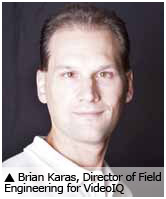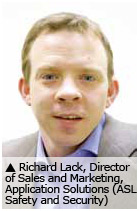Greenfield projects bring billions of investment dollars into a country. As more high-speed rail projects are being built from square one, there is a movement toward deploying emerging security technologies.
Without contstraints to existing networks or equipment, high-speed rail (HSR) projects are perfect breeding grounds for imagination and innovation, especially in infrastructure planning. “With HSR, planning is like a piece of blank paper where you can design and plan with an attitude,” said Chris Lawrence, Head of Security Advisory Services for TPS Consult. “With regular rail, it is more constrained as it can be very costly to re-engineer or upgrade the existing infrastructure. Thus, it is more difficult to be innovative.”
Greenfield projects bring billions of investment dollars into a country. As more high-speed rail projects are being built from square one, there is a movement toward deploying emerging security technologies.
Without contstraints to existing networks or equipment, high-speed rail (HSR) projects are perfect breeding grounds for imagination and innovation, especially in infrastructure planning. “With HSR, planning is like a piece of blank paper where you can design and plan with an attitude,” said Chris Lawrence, Head of Security Advisory Services for TPS Consult. “With regular rail, it is more constrained as it can be very costly to re-engineer or upgrade the existing infrastructure. Thus, it is more difficult to be innovative.”
China's HSR networks are classic greenfield projects where advanced technologies are being deployed. Take the Beijing-Tianjin Intercity Rail. The communications department oversees more than 10 subsystems, including cabling, data transmission, dispatch, emergency response and video surveillance. The video surveillance system has adopted state-ofthe- art video-coding techniques and video analytics to fulfill multiple purposes, such as low-bandwidth, HD image capture and automated alarms. “In places like China where many of the HSR lines are being built from scratch, there is a higher implementation of new, advanced technologies,” said Edward Tella, Solutions Leader for Safety, Security and Surveillance, Travel and Transportation, IBM.
Factors that are taken into account comprise the latest technologies available on the market and the perception of what technologies will be available in the near future, said Mark Marriage, founder and CTO for COE (a Digital Barriers company). “In the video surveillance sector, Ethernet transmission, megapixel cameras and video analytics are certainly of greater consideration for the specification of greenfield HSR projects.”
Other prevalent applications include informed use of HD systems and video analytics on automated event management and alerts through VMS or PSIM platforms, said Brian Karas, Director of Field Engineering for VideoIQ.
In critical-infrastructure projects like HSR, comprehensive video surveillance and analytic solutions are important in order to be competitive, Tella said. “These technologies, along with others, arm operators with the capabilities to act fast, connect systems and implement more operational facilities.”
Benefits
One of the biggest benefits is the elimination of future upgrade difficulties. “Greenfield projects are always easier to secure than retrofit or upgrade projects, primarily because we can design and plan for the future,” said Philip Lomax, Associate VP of Security, Kroll. “New technologies will only be considered if they are proven technologies. If technologies are in any way controversial, they would not be installed for fears of wasted resources and litigation concerns.” The issue of cost is also a key concern for some. “Technologies such as megapixel cameras are becoming standard usage, but remain too expensive for many users,” Lomax said.
 The latest, easily adaptable technologies are usually specified for greenfield projects, particularly with systems with rapid improvements such as video analytics and biometrics. “New projects constantly require integration, interfacing and customization of third-party systems, regardless of any existing system,” said Dr. Bernard Lottmann, Sales Manager at Building Technologies Division, Siemens.
The latest, easily adaptable technologies are usually specified for greenfield projects, particularly with systems with rapid improvements such as video analytics and biometrics. “New projects constantly require integration, interfacing and customization of third-party systems, regardless of any existing system,” said Dr. Bernard Lottmann, Sales Manager at Building Technologies Division, Siemens.
Interoperability
With more and more cross-border, multinational projects on the rise, interoperability with other train stations, systems and operators takes on a significant yet challenging role. “Interoperability can be difficult because everyone — from train operators to people working the network infrastructure – has their own system. Some are mutually exclusive and cannot talk to one another,” Lawrence said. “There's a rebuilding in one of the London terminals where a state-of-the-art security system was put in. Now, at least police, train and network operators are talking to one another, and are fully aware of the systems that have been put in. The right, relevant people, for example, can take specific video feeds and examine them.”
Lomax agreed. “Interoperability between operators is never really considered. The reason is that individual operators have responsibilities for their own risk and budget. Having said that, we do feel that there needs to be more discussions on interoperability. In standard systems like stand-alone screening solutions and video surveillance, there are rarely any problems. Problems are more likely to arise with systems which require system protocols, such as access control and intrusion detection.”
Approach
Security approach should be considered on several different levels. “Interoperability is only achieved with political commitment,” Lottmann said. “Integrated security solutions at a site may overlap several sectors such as security and public utilities. The quantity of data — and free access to it at different locations — determines the degree of centralized command and control.”
 Deploying proven technologies is a safer bet. “Interoperability is being accomplished with commercial off-the-shelf hardware and open protocols,” said Richard Lack, Director of Sales and Marketing, Application Solutions (ASL Safety and Security). “Systems might have a maintenance shelf life of 15 to20 years, so systems which are vendorand protocol-independent are very much in favor in all countries.”
Deploying proven technologies is a safer bet. “Interoperability is being accomplished with commercial off-the-shelf hardware and open protocols,” said Richard Lack, Director of Sales and Marketing, Application Solutions (ASL Safety and Security). “Systems might have a maintenance shelf life of 15 to20 years, so systems which are vendorand protocol-independent are very much in favor in all countries.”
Standards are emerging in the security industry and will enable interoperability across systems and borders, Tella said. “Much of this is being driven by regulations, and timelines for implementation are set by governmental agencies such as the Federal Railroad Administration in the U.S. and the European Rail Traffic Management System on the other side of the Atlantic.”
Whether it is building from scratch or extending from existing infrastructure, the global market for HSR networks is set for strong growth. By the same token, larger deployments of emerging technologies will be evident and will provide rail operators with faster access to live and recorded video from multiple locations across stations or onboard. They also create interoperability among different departments and better address issues such as reliability, flexibility, operational benefits and, ultimately, safety and security.